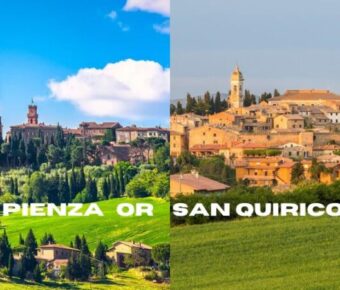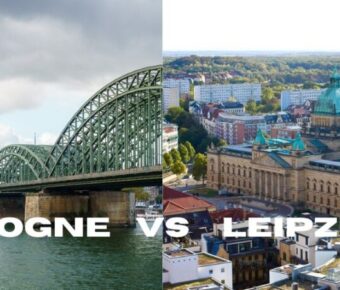
Florence vs Pisa: Which Historic Tuscan City Offers the Better Italian Experience?
Tuscany is home to two of Italy’s most treasured cities, each with distinct charm. Florence is the birthplace of the Renaissance, while Pisa draws millions to its iconic leaning tower. Both cities rest beneath the Apennine Mountains and offer rich cultural experiences for travelers.
Most travelers find that Florence is the better choice, offering more attractions, activities, and cultural sites. You typically need 2-7 days to explore everything Florence offers, while Pisa can be fully experienced in 1-3 days. The smaller size of Pisa makes it perfect for a day trip, with its main attractions centered around the Field of Miracles.
Many travelers find the perfect balance by combining both destinations. A morning arrival in Pisa allows time to see its famous tower and cathedral before catching an afternoon train to Florence, where Renaissance art, historic palaces, and world-class museums await.
Table of Contents
- Historical Significance
- Florence’s Renaissance Legacy
- Pisa’s Maritime History
- Cultural Offerings
- Museums and Art of Florence
- Historical Monuments of Pisa
- Architectural Marvels
- The Duomo Complex in Florence
- Piazza dei Miracoli’s Wonders
- Gastronomy Comparison
- Florence’s Culinary Scene
- Delicacies from Pisa
- Lifestyle and Activities
- Arts and Nightlife in Florence
- Leisure Activities in Pisa
- Day Trip Destinations
- Excursions from Florence
- Venturing Beyond Pisa
- Travel Recommendations
- Accommodations and Stay
- Navigating Transportation
- Tips for Budget Travelers
- Frequently Asked Questions
- What are the transportation options available from Pisa Airport to Florence?
- Which is more convenient for travelers, staying in Pisa or Florence?
- What historical conflicts occurred between Florence and Pisa?
- Can you highlight the advantages of choosing to visit Florence over Pisa?
- What are the key considerations when deciding whether to fly into Pisa or Florence?
- How does the train connection between Pisa and Florence accommodate tourists?
- Book Your Dream Experience
- More Travel Guides
Historical Significance

Through centuries of fierce rivalry, Florence and Pisa shaped Italy’s cultural and economic landscape. Their distinct paths led Florence to become an artistic powerhouse while Pisa dominated maritime trade.
Florence’s Renaissance Legacy
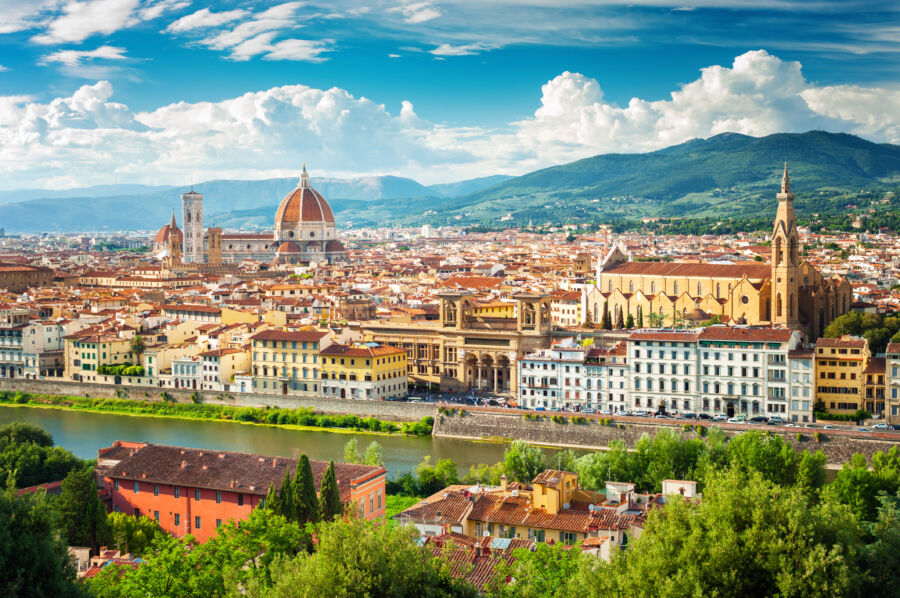
The city’s artistic and cultural achievements during the Renaissance transformed it into a global icon. The stunning Santa Maria del Fiore cathedral’s massive dome is a testament to Florentine innovation and wealth. In 1982, it became a UNESCO World Heritage site.
The Ponte Vecchio, Florence’s oldest bridge, symbolizes the city’s merchant traditions. Built in 1345, it housed butcher shops before becoming home to jewelers and goldsmiths.
Florence’s powerful Medici family funded countless artists and architects. Their patronage helped create masterpieces that still draw millions of visitors each year.
Pisa’s Maritime History
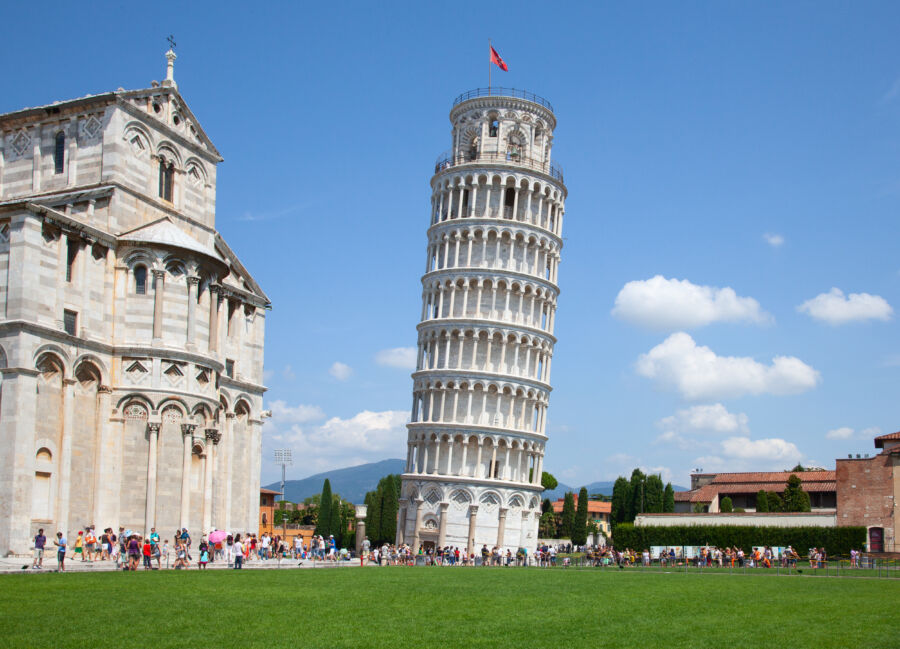
Pisa’s strategic location on the Arno River made it a significant Mediterranean naval power in the 11th and 12th centuries. The city’s wealth from maritime trade funded its remarkable Square of Miracles complex.
The iconic Leaning Tower of Pisa started tilting during construction in 1173. Today, this architectural mishap attracts over 4 million visitors annually.
Before its decline, Pisa controlled important trade routes and fought naval battles against rival powers. Genoa’s defeat in 1284 marked the start of Pisa’s decline as a maritime force.
The Duomo of Pisa showcases the city’s past glory through its mix of Classical, Byzantine, and Islamic architectural elements. Built using spoils from naval victories, it represents Pisa’s former might as a seafaring republic.
Cultural Offerings
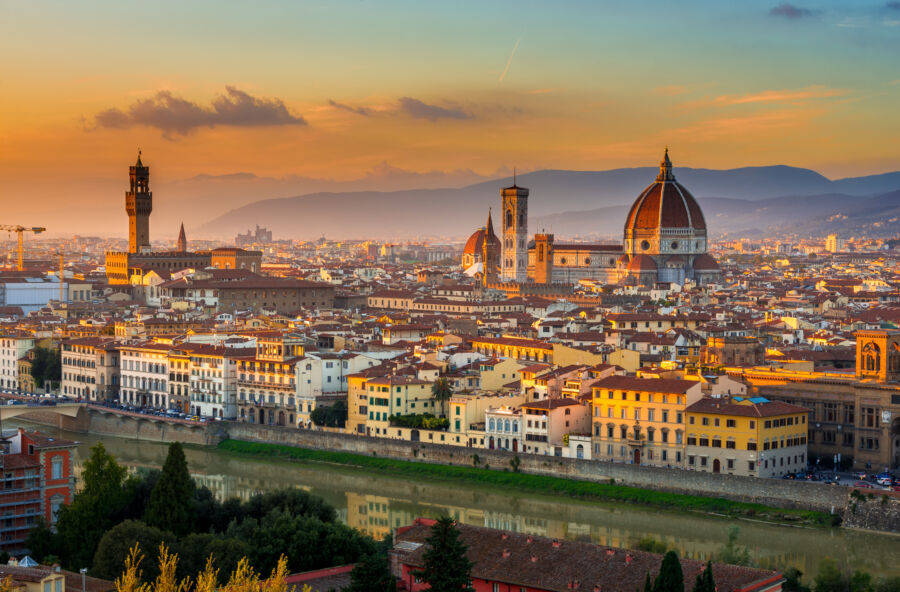
Florence and Pisa each offer a unique blend of art, history, and cultural riches. Florence is a powerhouse of Renaissance art, while Pisa showcases impressive medieval architecture and maritime heritage.
Museums and Art of Florence
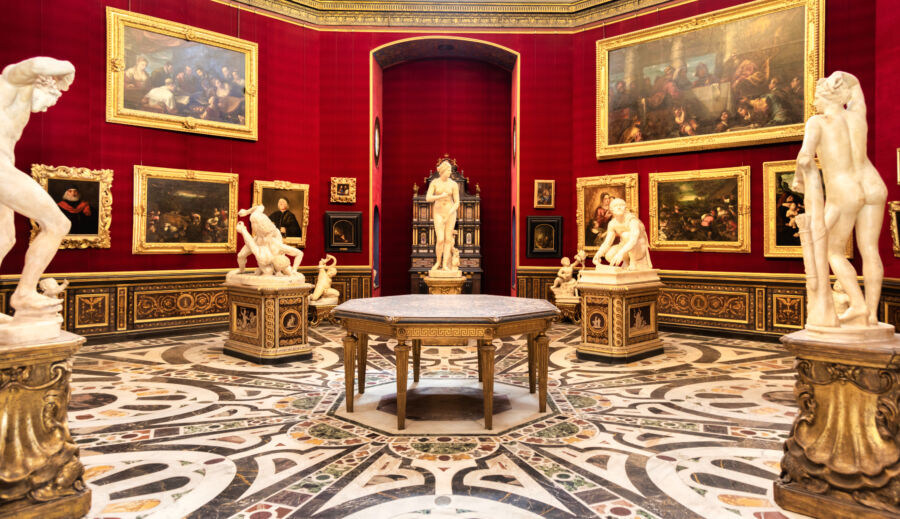
The Uffizi Gallery is one of the world’s most important art museums. It houses masterpieces by Botticelli, Leonardo da Vinci, and countless other Renaissance giants.
The Accademia Gallery draws visitors from across the globe to see Michelangelo’s famous David statue in person. The 17-foot marble masterpiece still takes people’s breath away, just like in 1504.
The Palazzo Pitti houses several museums under one roof. The Palatine Gallery, filled with Renaissance paintings, the Modern Art Gallery, and even a Costume Museum, shows fashion through the ages.
Historical Monuments of Pisa
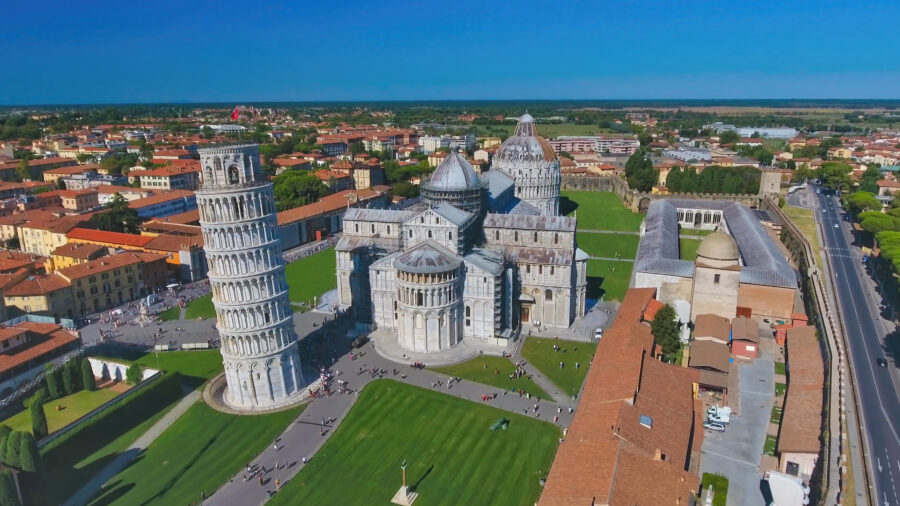
The Leaning Tower steals the spotlight, but Pisa’s Piazza dei Miracoli offers much more. This stunning square holds four architectural masterpieces: the famous tower, the Cathedral, the Baptistery, and the Camposanto.
Pisa’s medieval roots shine through in its architecture and layout. The city’s narrow streets and historic buildings tell stories of its powerful past as a maritime republic.
The University of Pisa, founded in 1343, adds to the city’s cultural scene. It has hosted famous scholars like Galileo Galilei and continues to bring academic energy to the town.
The Knights’ Square (Piazza dei Cavalieri) shows off beautiful Renaissance buildings and tells tales of the city’s military history.
See Related: Florence vs Venice: Which Italian Gem Should You Visit First?
Architectural Marvels
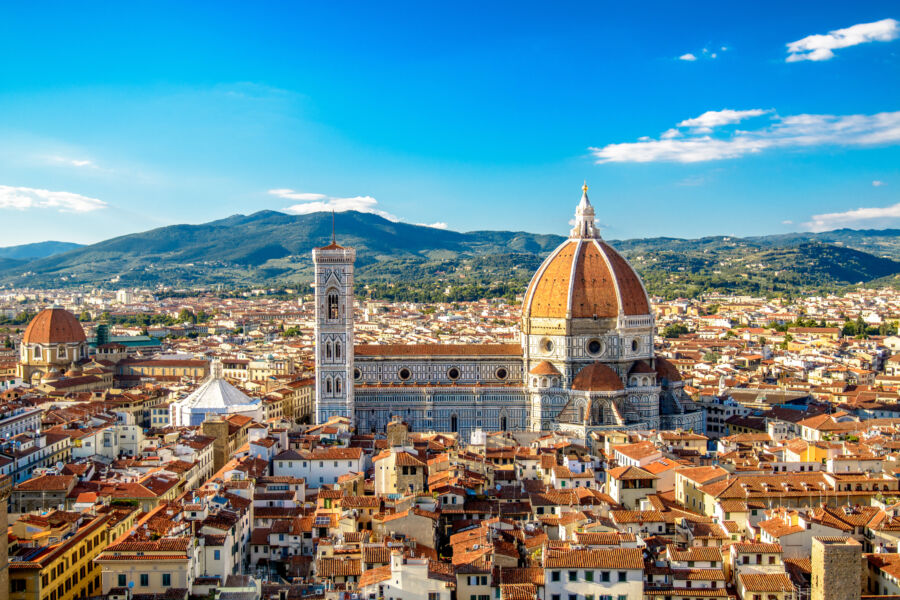
Florence and Pisa stand out for their iconic architectural treasures. The cities showcase masterpieces of medieval and Renaissance design that attract millions of visitors annually.
The Duomo Complex in Florence

The Santa Maria del Fiore cathedral dominates Florence’s skyline with its massive red-tiled dome. Brunelleschi’s dome remains an engineering marvel, built without scaffolding in the 1400s.
The cathedral’s exterior dazzles with intricate white, green, and pink marble patterns. Its facade tells biblical stories through detailed sculptures and mosaics.
Giotto’s Bell Tower stands 277 feet tall next to the cathedral. Visitors can climb its 414 steps for stunning city views. The tower’s Gothic design features hexagonal panels depicting human activities and religious scenes.
Piazza dei Miracoli’s Wonders
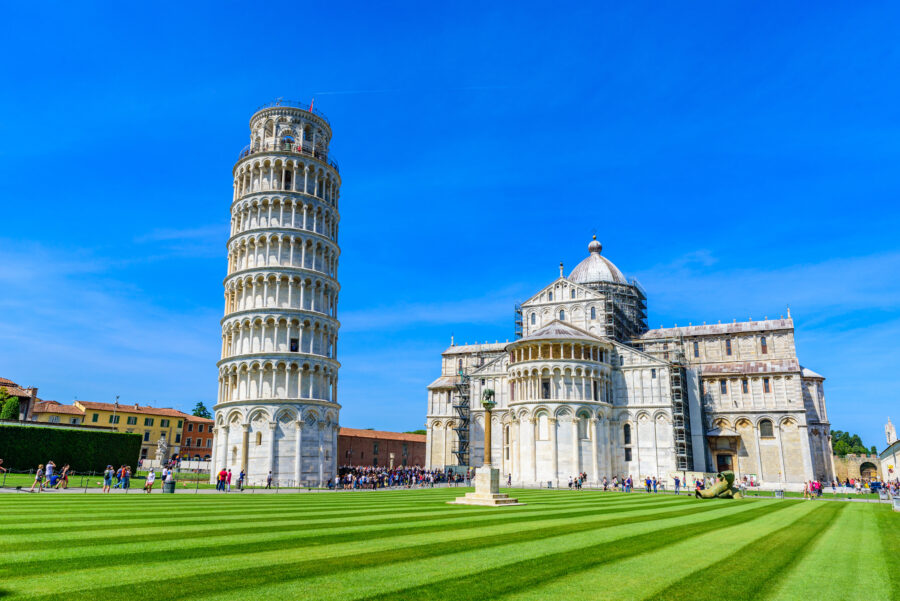
The Leaning Tower of Pisa tilts at a 4-degree angle, making it one of Italy’s most photographed monuments. This 184-foot marble bell tower took 199 years to complete.
The tower is located in the stunning Piazza dei Miracoli alongside three other architectural gems. The Pisa Cathedral’s striped marble exterior and ornate bronze doors exemplify Pisan-Romanesque style.
The circular Baptistery, Italy’s largest, features remarkable acoustics where sounds echo for several seconds. Its mix of Romanesque and Gothic styles creates a unique architectural blend.
Gastronomy Comparison

Both Florence and Pisa offer distinct culinary experiences rooted in traditional Tuscan cooking. Each city puts its spin on regional favorites while maintaining authenticity in flavors and cooking methods.
Florence’s Culinary Scene
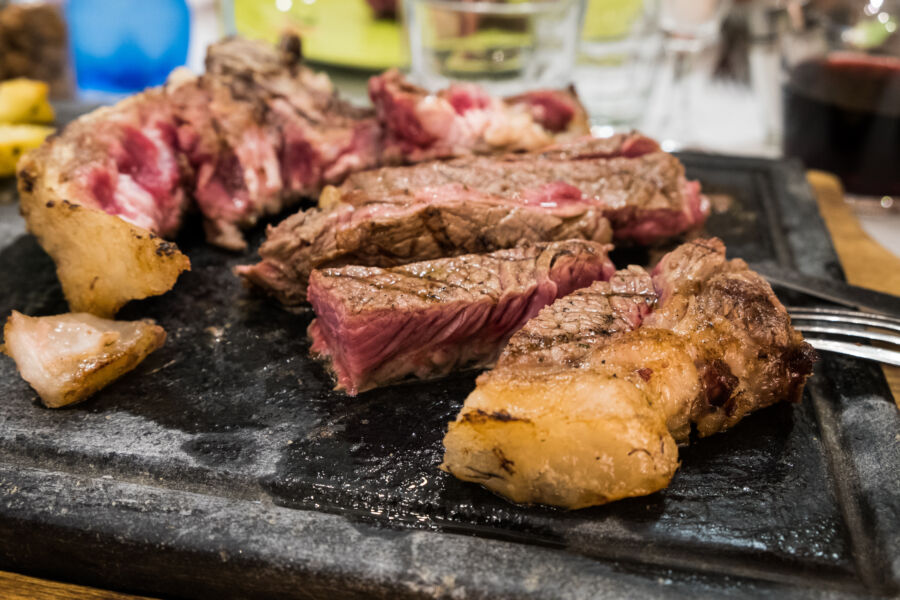
The Bistecca alla Fiorentina is Florence’s crowning achievement—a massive T-bone steak grilled to perfection over oak coals. Local butcher shops age these cuts from Chianina cattle for maximum flavor.
The city’s trattorias serve hearty dishes like ribollita, a rich vegetable soup thickened with bread. Many family-run establishments also serve fresh pasta topped with wild boar ragu.
Wine flows freely in Florence, with many enotecas offering Chianti Classico by the glass. The historic center houses countless food markets where locals shop for fresh ingredients.
Delicacies from Pisa

Pisa’s cuisine leans toward seafood, thanks to its location near the coast. Local specialties include Baccalà alla piscina—salt cod prepared with tomatoes, garlic, and pine nuts.
The city’s signature pasta dish is Pici al ragù Pisano—thick, hand-rolled spaghetti with a rich meat sauce. Small wine bars dot the medieval streets, serving local Tuscan wines in cozy settings.
Street food thrives near the Leaning Tower, with vendors selling cecina – a crispy chickpea flatbread that’s a beloved local snack. Many family-run bakeries produce torta co’ bischeri, a rice cake spiced with candied fruit.
Lifestyle and Activities
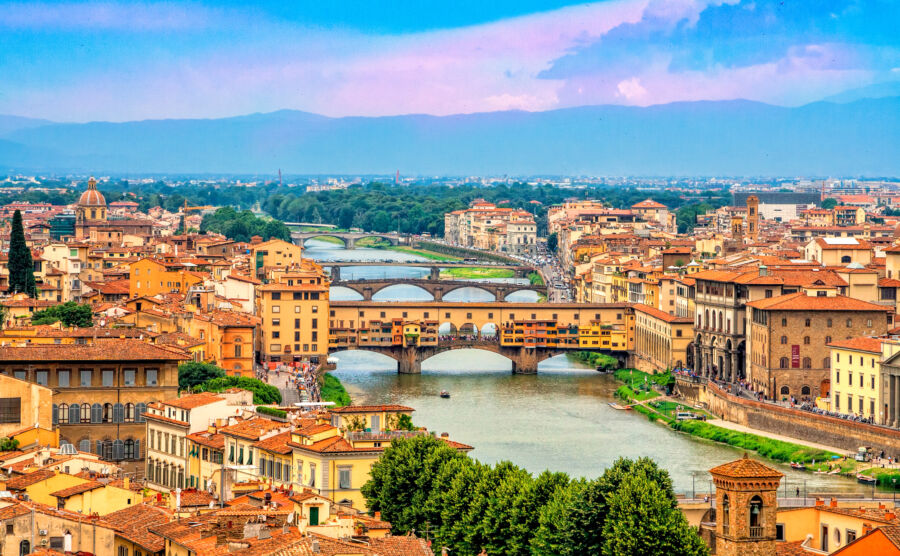
Florence and Pisa offer two distinct experiences regarding daily life and entertainment. Each city brings its special flavor to arts, dining, and recreation.
Arts and Nightlife in Florence
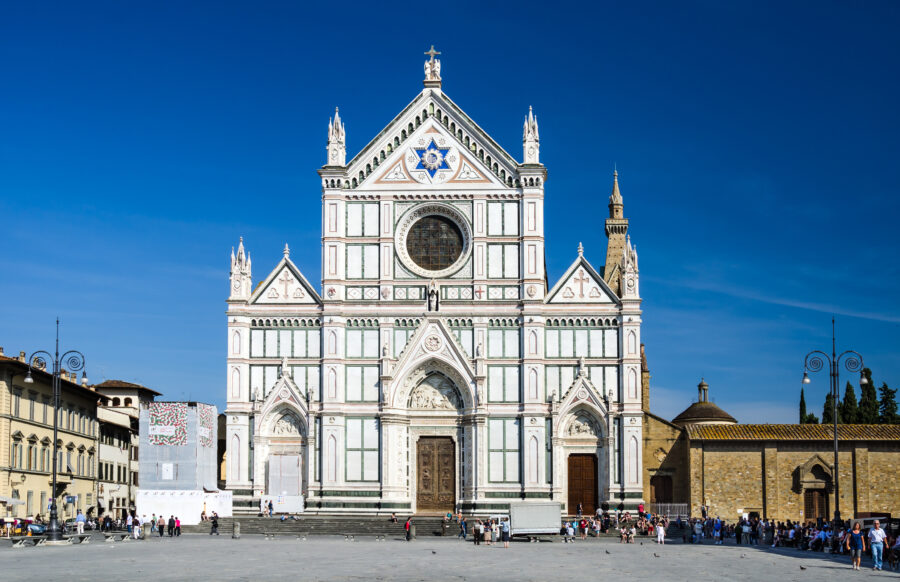
Florence buzzes with artistic energy day and night. The city’s galleries open late, letting visitors explore masterpieces after sunset. Art lovers can wander through small independent galleries in the Oltrarno district.
The nightlife scene centers around Santa Croce and Santo Spirito squares. These areas fill with students and locals enjoying aperitivo at wine bars and craft cocktail spots. Live music venues showcase everything from jazz to electronic beats.
Popular Evening Activities:
- Gallery hopping in contemporary art spaces
- Wine tasting events in historic cellars
- Dancing at clubs along Via dei Benci
- Open-air concerts in the summer months
Leisure Activities in Pisa
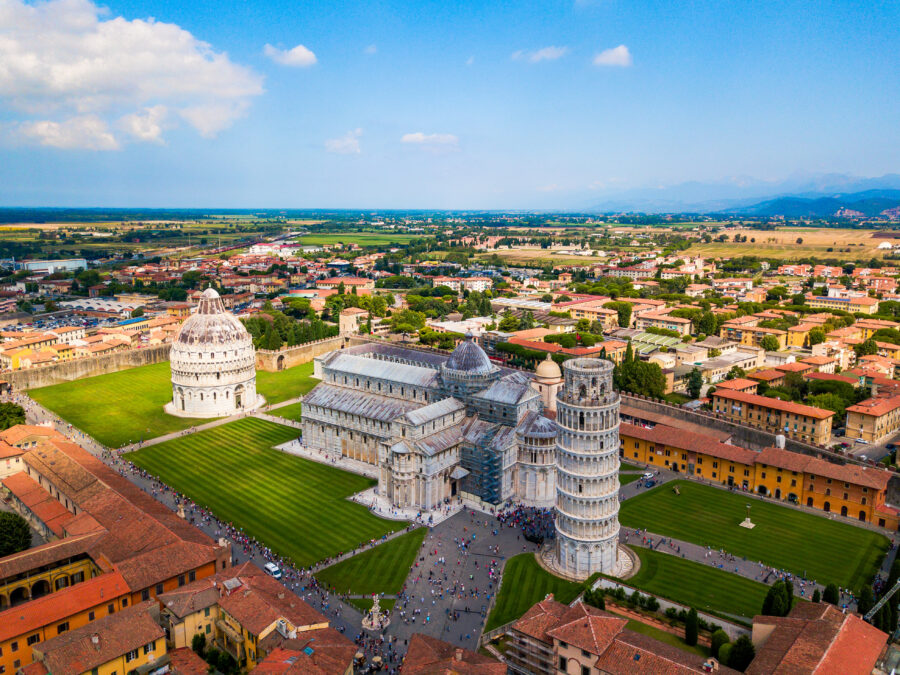
Pisa offers a more laid-back vibe with plenty of outdoor spaces. With its rocky coastline and refreshing Mediterranean waters, the Marina di Pisa beach area provides a perfect escape during warm months.
Shopping enthusiasts browse boutiques along the elegant Borgo Stretto. This historic street features local designers and authentic Italian fashion. The surrounding cafes make ideal spots for people-watching.
Top Things to Do:
- Sunbathing at Marina di Pisa
- Cycling along the Arno River
- Shopping at Borgo Stretto boutiques
- Picnicking in the Botanical Garden
The wide boulevards and peaceful parks give Pisa a relaxed atmosphere, contrasting with Florence’s busy energy. Students from the university keep the cafe scene lively without being overwhelming.
See Related: Florence vs Turin: Which Italian Gem Should You Visit?
Day Trip Destinations
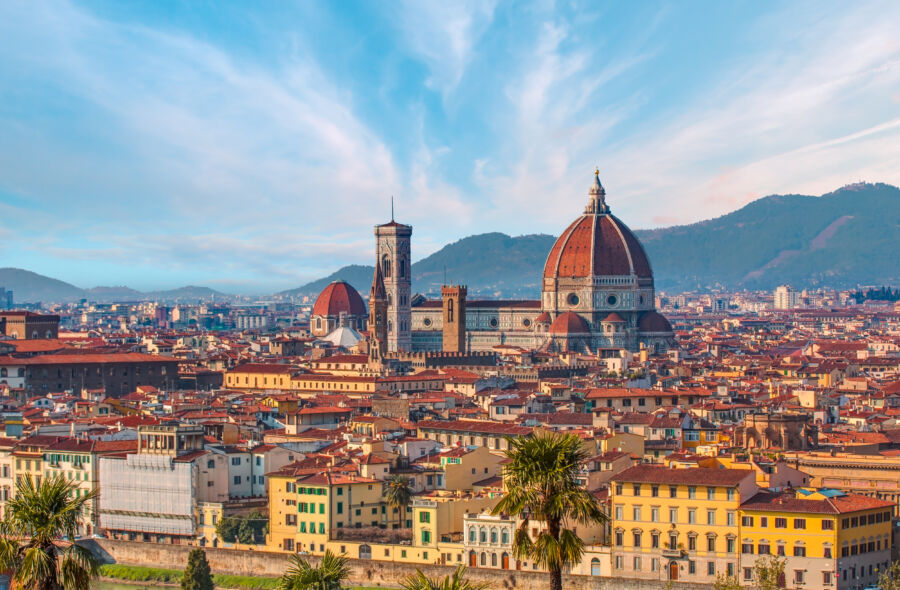
Florence and Pisa are excellent starting points for exploring Tuscany’s treasures. Both cities offer convenient access to charming towns, rolling countryside, and stunning coastal areas.
Excursions from Florence

Popular day trips from Florence include the medieval town of Siena with its shell-shaped main square and biennial horse race. The walled city of Lucca lies just 90 minutes away by train, perfect for cycling along ancient ramparts and enjoying authentic Tuscan cuisine.
The Chianti wine region sits right on Florence’s doorstep. Visitors can explore family-run vineyards and stone villages nestled among the grape vines.
Getting to key destinations:
- Siena: 1.5 hours by bus
- Lucca: 90 minutes by train
- Chianti: 45 minutes by car
Venturing Beyond Pisa

Pisa’s location near the coast opens up exciting seaside adventures. The colorful fishing villages of Cinque Terre, with their dramatic clifftop hiking trails and beaches, make for an unforgettable trip.
Lesser-known gems include the alabaster workshops of Volterra and San Miniato’s white truffle forests. These authentic towns give visitors a taste of local life away from tourist crowds.
Top coastal options:
- Marina di Pisa beach: 20 minutes
- Viareggio resort town: 30 minutes
- Book exciting day tours to Cinque Terre: 2 hours
Travel Recommendations

Making wise choices about accommodations and transportation can save time and money when visiting these historic Tuscan cities. Proper planning helps travelers maximize their experience while keeping costs manageable.
Accommodations and Stay

Florence offers a broader range of hotels and accommodations across all price points. The Santa Croce and San Marco neighborhoods put visitors close to major attractions while being quieter than the busy city center.
Small boutique hotels near the Arno River provide stunning views and easy access to the Uffizi Gallery. The Oltrarno district, with charming guesthouses, gives travelers a more local experience.
Pisa has fewer lodging options, mainly concentrated around the Square of Miracles. Most travelers can see Pisa’s highlights on a day trip from Florence rather than staying overnight.

Regional trains run every 30 minutes and connect both cities well. The trip takes about 1 hour and costs €8-12. During peak season, book train tickets in advance.
Florence’s historic center is walkable. The efficient bus system helps reach outer attractions like Piazzale Michelangelo. Walking or biking lets visitors discover hidden gems in narrow medieval streets.
Pisa’s main sights cluster around the Leaning Tower. The LAM Rossa bus runs from the train station to the Square of Miracles every 10 minutes.
Tips for Budget Travelers
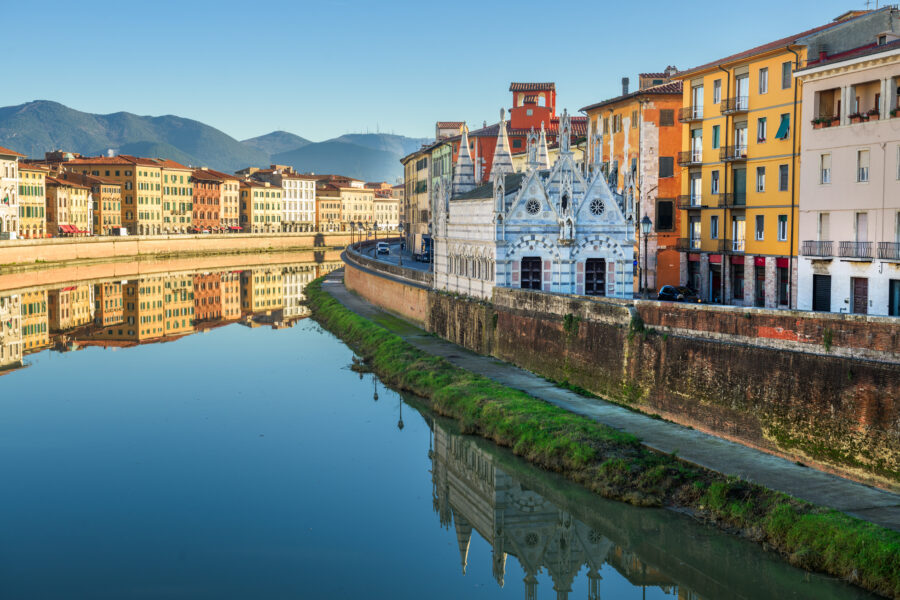
Many Florence museums offer free entry on the first Sunday of each month. The Firenze Card gives 72-hour unlimited access to major museums.
Street food markets like Sant’Ambrogio provide affordable local cuisine. Try lampredotto sandwiches from food carts for authentic Florentine flavor.
Pisa admission tickets cost less if purchased online ahead of time. The best city views come free from the Lungarno riverside walk.
Student discounts apply at most attractions with a valid ID. Travel in shoulder season (March-May or September-October) for better rates.
See Related: Rome vs Florence: Which Italian Gem Steals the Show?
Frequently Asked Questions

Travelers planning their Italian adventures often have questions about getting between Pisa and Florence. These two historic rivals offer different experiences that shape trip planning decisions.
What are the transportation options available from Pisa Airport to Florence?
The Pisa Mover shuttle connects Pisa Airport to Pisa Centrale station in 5 minutes. Direct trains run to Florence Santa Maria Novella station every 30 minutes.
The journey takes about 1 hour and costs €8-13 for standard tickets. Private transfers and shared shuttle services also operate between the airports.
Which is more convenient for travelers, staying in Pisa or Florence?
Florence offers more accommodation choices, from luxury hotels to budget hostels. The city puts you closer to major attractions and art museums.
Pisa works better as a day trip destination. Its smaller size means fewer lodging options and restaurants.
What historical conflicts occurred between Florence and Pisa?
The cities fought numerous wars between the 12th and 15th centuries. Florence wanted control of Pisa’s port access to the Mediterranean Sea.
Florence conquered Pisa in 1406 after a long siege. This victory gave Florence better trade routes and expanded its territory.
Can you highlight the advantages of choosing to visit Florence over Pisa?
Florence contains more museums, churches, and Renaissance art. The Uffizi Gallery and Accademia display world-famous masterpieces.
The city buzzes with restaurants, shopping, and nightlife. Wine regions sit nearby for easy day trips.
Streets lined with historic architecture create a magical atmosphere for walking and exploring.
What are the key considerations when deciding whether to fly into Pisa or Florence?
Pisa Airport handles more flights and budget carriers. Its larger size means cheaper fares and more route options.
Florence Airport serves fewer destinations but is closer to the city center. The trade-off is higher ticket prices.
How does the train connection between Pisa and Florence accommodate tourists?
Direct trains run every 30 minutes between Pisa Centrale and Florence SMN stations, and the ride takes about an hour.
Tickets are affordable, ranging from €8 to €13 each way. Trains offer comfy seats and luggage space. The stations are in central locations, making it easy to start sightseeing right after arrival.
